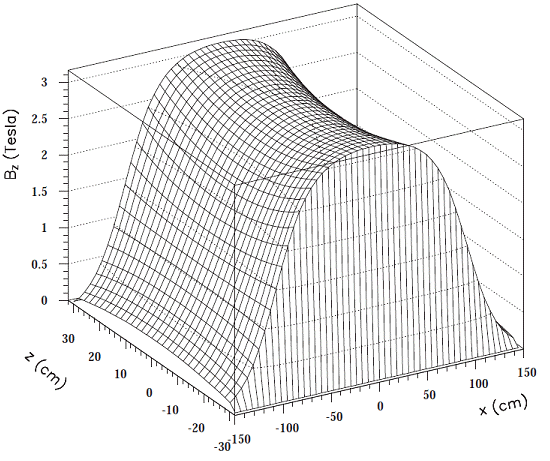
...................................................................................................
Last Updated: 23/7/2014. The Website is Still Under Development.
The M1 magnet is made of two coils in a configuration similar to a pair of Helmholtz coils. It provides a 3-T horizontal magnetic field in its centre, and 3.6T in the centre of each coil. There are two possible magnetic field orientations in the horizontal plane with respect to the SPS beam line direction. One field orientation is parallel to the beam line, the second orientation is at an angle of 90° and is therefore perpendicular to the beam line direction. The field orientation can be modified only by rotating the entire magnet. This rotation implies heavy mechanics and must be scheduled well ahead of the foreseen operation, in coordination and agreement with other users of the facility. The field polarity can also be reversed for either position.
The two coils are in a vertical plane, aligned on the same horizontal axis. The two coils are made of NbTi superconducting windings. They are cooled down to 4.2K with a dedicated refrigerator and each coil is immersed into a liquid helium bath. Each coil is inside its own cryostat and each cryostat is attached to a vertical steel plate. Both plates are attached to each other by 4 cylindrical steel rods to withstand the magnetic forces acting on each coil.
The internal bore of each cryostat is at room temperature and accessible from all sides. The free internal diameter is 1400mm, and the free distance between the two cryostats is 820mm.
The magnet is located in a large experimental hall at CERN in the North Area, on the Prévessin site in France, in a radiation supervised area which is reserved for the users of the facility, with two 40 ton cranes and other technical services available.

The z-component of the magnetic field in M1, shown as a function of x and z. The x-direction is parallel to the beam, while z-direction is transverse to the beam.